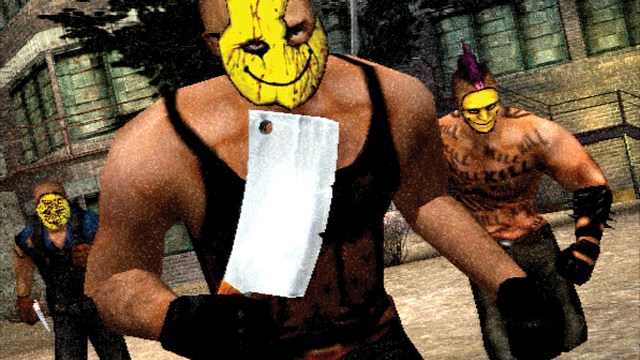Opinion by Matt S.
In a highly commercial industry, such as what we have with video games, it can be very difficult to justify building a transgressive game. By its nature, transgressive art is polarising, and that means a couple of things which tend to scare away investors, which a developer typically needs to have throwing money into a game development project for that game to get made:
1) A transgressive game is going to fare poorly on Metacritic. There are inevitably going to be critics that don’t like what such a game offers, and they’re going to drag a game’s rating into that dreaded yellow (under 70), if not red (under 40), score range.
2) A transgressive game will annoy and/or offend a sizable number of players. Annoyed and/or offended consumers have a number of ways to “get back” at game developers at their disposal, from organising reader review bombs through to harassing fans of those games.
To read on, sign in to your DDNet Premium account:
In other artistic media, transgressive art has never been particularly commercial. When we look at the masters of the form; the Dadaists, such as Antonin Artaud and his impossible play Jet of Blood, cultural revolutionary writers like Marquis De Sade, or the films of the likes of Gespar Noe or Lars Von Trier, they’re not household names for a very good reason.
For these reasons, video games have very few truly transgressive experiences. There’s a couple that have come from the most niche corners of the non-commercial side of the industry, and there have been some more “edgy” commercial projects that have certainly been approached by the developers with a transgressive spirit, but we certainly haven’t got our equivalent to Artaud. Yet. Artists like Goichi Suda and Tomonobu Itagaki I refer to as “transgressive,” because it’s an evocative word that immediately creates a image of the work as something alternative and niche, but when compared to artists in other fields, they’re really not. Creative and punk in attitude, that they certainly are. Gleefully tearing apart games at their foundations, however, they do not.
Transgression, as a concept, is generally misunderstood in games spaces, and then subsequently misused or colloquialised. So, what exactly is it then?
I’ve always found Michel Foucault to be a useful reference point when discussing transgression, and while his philosophy around the topic is too complex to even try and summarise in a single article, the following passage is a useful baseline for understanding transgression;
Perhaps [transgression] is like a flash of lightning in the night which, from the beginning of time, gives a dense and black intensity to the night it denies, which lights up the night from the inside, from top to bottom, yet owes to the dark the stark clarity of its manifestation, its harrowing and poised singularity.
What Foucault boils transgression down to is this; it’s an experience that transcends beyond a limit to enter a space that is taboo or sublime. In doing so, those that have broken through the limit into the sublime can come to better terms with the existence, purpose, and value of the limit. It’s a form of understanding through experience, if you will.
To bring that to context into arts, a simple example is this – any film, book, performance or game that pushes an invisible, but culturally contextual, line to the point where it breaks, is transgressive. When an art work does this, the typical response that we see is that the work blows up in a storm of controversy. It may, or may not, find itself the target of censors, but transgression can happen in other ways too; Salvador Dali’s work often denied the core values of art, and as such is transgressive, but was never banned. The aforementioned play, Jet of Blood, is actually impossible to put on, because it breaks so many foundational rules of theatre, but no one is stopping people from trying. Controversy certainly goes hand in hand with many transgressive works, but transgressive works don’t have to be controversial.
In games, I would make the argument that a game like Proteus is transgressive, for example. It’s not that Proteus is offensive or controversial in any way, but what it does do is break, completely, with various conventions of play; the idea that your on-screen avatar should physically interact with an object in order to illicit a response, for example, is a well-established convention of game design. And yet in Proteus players interact with everything in the world without touching a thing. It’s certainly a game that pushes what we understand of interactivity into new places, and that is surely a sign of transgression.
Why play transgressive games?
One of the problems that games face as works of art is that very few actually want to participate in transgressive experiences. To be comfortable with transgression means, by nature, that you’re comfortable with being deeply challenged, if not outright offended, and not everyone wants to experience that, because it’s rarely fun, rarely easy (not in gameplay terms, but the emotional and intellectual impact it has), and almost by definition it’s not comfortable.
Transgressive art requires that players be comfortable with being uncomfortable, and having to really think about what they’re experiencing during, and after, the experience. It’s the kind of art for people who are comfortable challenging their moral perceptions and assumptions on what they see and experience, and it’s the kind of art for people who are happy to break beyond the established rules of “play” in order to experience something that might be making a point of playing “poorly.” The general social conservatism that runs through the games industry is simply not conducive to these kinds of experiences.
So why do transgressive games at all, then? Why would a game developer want to make something that they know might upset some people, and why would a player willingly expose themselves to that?
Because, in being challenged, we learn. If we’re confronted by Lolita (and we should be), then it’s because we’re witnessing a mirror to a side of western culture that we don’t really think about. When the Marquis De Sade wrote his books, they were his way of being revolutionary, of challenging the establishment, of challenging readers to see the establishment in a different light. Art doesn’t exist purely to entertain. It also challenges and enlightens.
And transgressive art does one other thing remarkably well; it encourages people to talk, and debate, and challenge one another. The cultural value of art is the way it can bring communities together and to encourage them to discuss topics as deep as aesthetics and morality in open forum. The more extreme the experience, the stronger the conversations and debate might be, and the closer to an absolute purity art becomes.
For these reasons I believe we need more transgressive art in games. We have elements of it in places, with games like Proteus, Lollipop Chainsaw and Nier transgressing through subversion. But we still need to find our industry’s take on Antonin Artaud. His or her games would be played by few, and liked by even fewer, but they would help us understand where the full potential of games lie.
– Matt S.
Editor-in-Chief
Find me on Twitter: @digitallydownld











